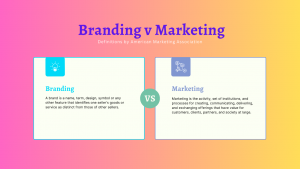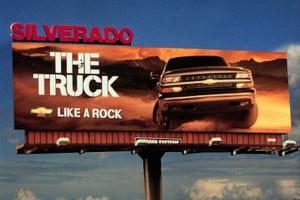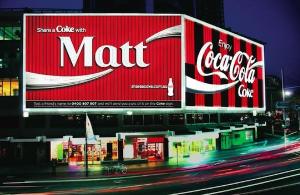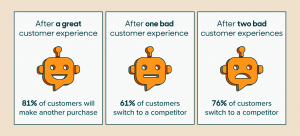
Marketing vs branding is a simple concept, but still, it befuddles so many people that it’s surprising. If I had a dollar for every time people used branding and marketing as if they both mean the same thing, I’d have made enough to spend the rest of my life golfing and not going to work for a single day. But no one paid me, and people are still using branding and marketing interchangeably.
One of the reasons why people confuse the two terms is because of how close they both are in terms of concept and purpose. Let’s understand the difference using an office analogy.
Marketing is like office get-togethers. You send out invites, you tell people how cool your workplace is, and you convince your employees that you genuinely care about them. The event is largely fun, people enjoy drinks, talk to each other, play games, and have photos clicked which also go on social media. It’s good for the company’s reputation as a “cool” workplace where employees are comforted. This is all promotion, hence the marketing.
Now the same company is either making a product or offering a service. How popular is their product or how effective is their service determines their popularity. How recognizable the company is among consumers, and what is its core message? How has the company presented itself in the market, and how much people have faith in their product? What makes their product or service stand out from the rest? This all is determined by branding.

It is not always marketing vs branding. It is not a competition as they do not operate in isolation. A company can pose itself to be a very strong brand – heads and shoulders above its competitors – but unless people know about the company, the brand is worthless. Telling people about the brand is marketing. But, it only works when a reliable brand exists in the first place. If you treat them as two separate strategies pitted against each other in a branding vs advertising match, then your brand and your marketing is doomed. A soulless brand can never galvanize its consumers to choose it over the competitor, no matter how bloated the marketing team is or how much money is funneled into running ads on social media.
Brand building activities vs. marketing activities
Branding Activities
There can be a number of branding activities, like:
Logo Design: Like a cell is the basic building block of a human, the logo is the most primitive element of a brand. It is the visual representation of a brand. A well-designed logo becomes synonymous with a company and helps in instant recognition. Apple’s logo has nothing written on it, but whenever you see a bitten apple, your mind doesn’t wander anywhere but to that one place.
Brand Storytelling: Brand storytelling can involve a number of elements, like the brand’s tagline, its messaging, and its perception. Telling a compelling brand story helps customers connect with it emotionally. The storytelling could include a narration of the journey from scratch, the challenges faced, and the brand’s values. All these things humanize a brand and build trust among consumers.
Brand Collateral: Brand collateral is designing and producing various materials such as business cards, letterheads, packaging, and other physical or digital assets that reflect the brand’s identity.
Marketing activities
Everything that projects, promotes, and puts the brand out in public is marketing.
If you are creating and sharing content such as blogs, videos, and infographics to attract, engage and target audiences, it is marketing. Social media posts on Facebook, Twitter, Instagram and LinkedIn etc., to connect with customers and promote products/services are marketing. All other types of marketing, like email marketing, influencer marketing, event marketing, etc., are included in this. Search Engine Optimization, Pay-Per-Click Advertising, or social media ads, which are aimed at improving the brand’s visibility and keeping it always in front of your consumers’ eyes, fall under the umbrella of marketing. Your public relations or product launch campaigns are also marketing.
So basically, you only need to know two things to understand the difference between branding and marketing.
- Branding comes first, and marketing follows. There is no branding without marketing, and no marketing without a brand.
- Branding is long-term. Brand loyalty is passed on from generation to generation. Marketing is short-term. A trend today will vanish tomorrow. So, marketing efforts are target-based strategies, implemented to promote a brand for a short time before the next campaign is designed.
The success of branding and marketing strategies is determined by different metrics. The measure of how successful branding is, vastly differs from the ROI of marketing. While measuring marketing returns is simple, as ample numbers can be gleaned from social media and search engines to see how many people saw your ads or visited your website, the real test is how you measure the brand’s success. Branding involves a lot of intangibles like brand recognition, brand awareness, brand perception, etc. But there are still some metrics that can determine the quantum of a brand’s value.
Share of Voice: The portion of the overall online conversation in the industry that a brand occupies, indicating its brand’s visibility and influence.
Net Promoter Score: It assesses customer loyalty and satisfaction by asking customers how likely they are to recommend the brand to others.
Customer lifetime value (CLV): It is a metric that denotes the total net profit an organization can expect to receive from a client during the entire relationship.
Repeat Purchase Rate: The percentage of clients who make multiple purchases, showing their loyalty to the brand.
Brand Equity Index: It is a composite score that combines various brand-related metrics to assess the overall strength and value of the brand in the market.
Brand Valuation: It estimates a brand’s financial value, often calculated using methods like the income or market approach.
Market Share: This is probably the most important metric to check the brand’s value as it tells what percentage of the market is captured by the brand compared to its competition. To give you an idea of what a successful brand’s market share looks like, Coca-Cola holds a 43.7% market share of global sales in the non-alcoholic beverage industry.
Marketing vs branding: How to blend them
Brand distinctiveness
Since competition has become a thing among companies, brands have been vying to appear more distinctive from their competition. There is one simple goal behind all this hustle – make people choose you over your competition.
One of my favorite campaigns to show brand distinctiveness was done by Chevrolet before the launch of their Silverado truck. Now, the company was competing with Ford, Nissan, and Toyota, who all manufacture great trucks, and the brands are instantly recognizable too.
What Chevrolet did is one of their marketing executives listened to the song ‘Like A Rock’ by Bob Seger and decided to design a whole marketing campaign around it. “Like a Rock” became the tagline, meant to show how Chevy trucks can go in difficult terrains and take you to all sorts of places where the competitor’s trucks might not go. The campaign was so hit, it was used for the launch of every Chevy truck from the 1990s and early 2000s. It not only established Chevrolet’s brand distinctiveness but also established it as an all-terrain truck. It was also a great example of branding in marketing and how brand distinctiveness can be amplified through marketing.

Using marketing trends for brand activation
Brand activation means steps, initiatives, and campaigns undertaken to bring a brand to life, engage consumers, and create meaningful interactions that lead to increased brand awareness, loyalty, and, ultimately, financial value. Brand activation is crucial as it directly impacts a brand’s ability to connect with its target audience and drive tangible business outcomes.
It leads to purposeful engagement between the brand and consumers, meaning the consumers participate in the brand’s campaign and become its ambassadors.
There is no better example of it than what Coca-Cola did with its “Share a Coke” campaign. Just by replacing the label with names, it encouraged consumers to buy the beverage in more quantities and share it with their loved ones. The campaign activated the brand, and then it was carried forward by the people. To date, it is one of the most successful marketing campaigns. It was launched in more than 70 countries. Only in Australia – where the campaign was first rolled out – Coca-Cola sold more than 250 million named bottles and cans in the first year of the Share a Coke campaign.

The company roped in celebrities like Ludacris, Selena Gomez, and Lupita Nyong’o for its promotional campaigns, showing how brand management vs marketing could combine to yield extraordinary dividends.
Using marketing measures to retain brand loyalty
Selling the first time is relatively easier. You can convince people that your product is new, it offers a host of features that you claim are not available in any of your competitors’ products, and if nothing works, you can always ask people to just give it a try because it won’t cost them anything.
So, ok. Now you have sold them once, what now? Pack your things and go home? No! You’re in a business, and business means money. It comes from customers who buy your product once and then keep spending money on it.
To make a customer buy from you the second and then the third time, you need to turn them into your loyal customers. This is done by creating brand loyalty – a kind of emotional connection that makes you choose a brand even when several other companies are offering more or less the same products.
Brand loyalty means employing strategic methodologies to forge enduring relationships between a brand and its customers. It is a process that never stops because, honestly, even loyal customer can turn their back on you after one bad experience or an error. According to the numbers, 61 percent of customers would switch to a competitor.

Emotional branding is at the heart of developing brand loyalty retention. It’s the art of crafting narratives that evoke emotions, tapping into the psychological substrates of consumers’ self-identity and aspirations.
Talk about brand loyalty, and you cannot complete the narrative without mentioning Apple. The brand has been topping the charts in terms of brand loyalty for years now, and it is not stopping. The rate has been over 90 percent since 2020. Now, the company has cultivated a “consumer cult” by focusing on high-end products, top-notch designs, efficient user experience, and of course, connections with its customers.
We all wait anxiously for Apple’s product launches each year. Now Tim Cook does it, but back in the day, Steve Jobs used those events as a platform to all but convince his users that the iPhone was the only smartphone they should buy. Dan Hall, business director at 2Heads, said, “Apple product launches are not just about the tech itself, but the user experience and customer service. It puts its friendly interface at the front of every launch. It’s as recognizable now as the Apple motif itself.”
This is a smart trick Steve Jobs introduced to blend marketing – as product launches are essentially marketing events – with creating an emotional connection with customers and earning their long-term loyalty.
Parting Thoughts
Marketing vs branding is a debate that will keep on raging. The bottom line is that the two are like bagels and cream cheese. You blend them, and they satisfy your soul. In this sense, branding is like the hard work done by companies to cultivate a reputation. Marketing is a method that builds on it and turns reputation into profits because, at the end of the day, there is no bigger metric to measure a brand’s success than how much money people are spending on it.